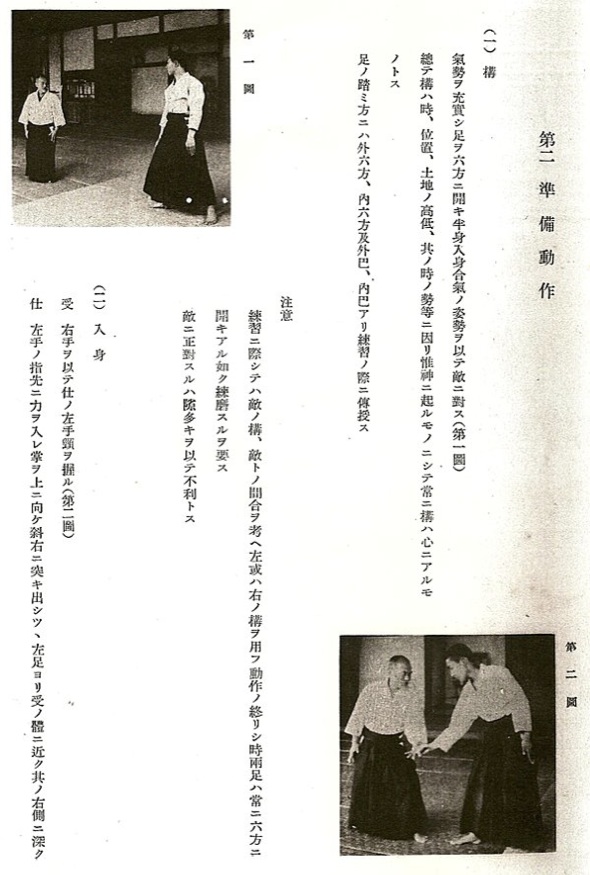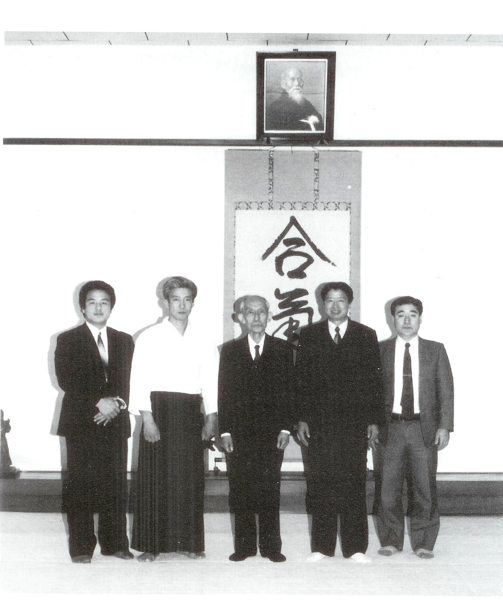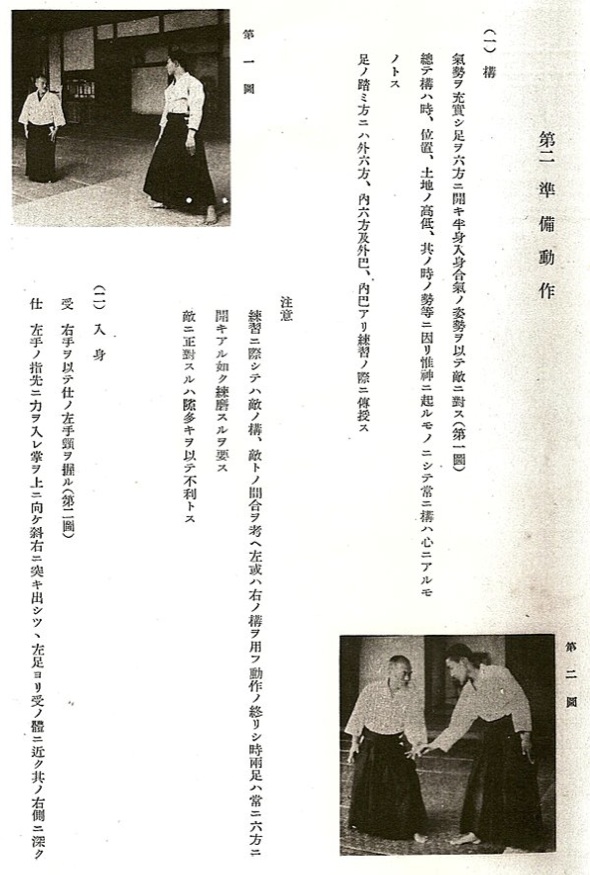Morihei Ueshiba, Budo en Kamae [Dutch Version]

‘Kamae’ van de technische handleiding ‘Budo’, Morihei Ueshiba 1938
*This is a Dutch translation of the article "Morihei Ueshiba, Budo and Kamae – Why we don’t know how to stand up and walk.", courtesy of Ernesto Lemke of Seikokan Aikido.
Staan en lopen, dat lijkt me nogal fundamenteel. Het is zo fundamenteel dat het zo’n beetje het eerste is wat je leert in de meeste budo. Of zelfs in het leven, als je tenminste zo ver terug kunt herinneren.
Zoals iedereen kreeg ook ik basis les in hoe ik moest staan toen ik met Aikido begon. Richt de voorste voet naar voren en de achterste voet naar buiten in een hoek. Sommige scholen gebruiken een meer gedetailleerde omschrijving maar dit is meestal de algemene strekking.
Nogal eenvoudig nietwaar? Iedereen kan het. Wat misschien ook het probleem is. Als iedereen het kan, en je doet in essentie hetzelfde wat je altijd al hebt gedaan…waarom breng je dan al die tijd op de mat door?
‘Budo’ is een vooroorlogse handleiding gepubliceerd in 1938 door de Grondlegger van Aikido, Morihei Ueshiba. Het werd oorspronkelijk geschreven voor Prins Kaya Tsunenori, een lid van een zijtak van de Keizerlijke familie. Kayanomiya werd uiteindelijk inspecteur van de Toyama Legerschool waar Morihei Ueshiba voor de oorlog als instructeur werkzaam was.
‘Budo’ blijft de grootste en meest geordende verzameling technieken van de vooroorlogse periode. Een Engelstalige editie (‘Budo: Teachings of the Founder of Aikido’), vertaald door John Stevens, werd gepubliceerd in 1991.
Een andere editie, de ‘Takemusu Aikido Special Edition’, vertaald door Sonoko Tanaka en Stanley A. Pranin werd gepubliceerd in 1999 (‘Budo: Commentary on the 1938 Training Manual of Morihei Ueshiba’). Deze editie bestaat uit fragmenten uit de Japanse tekst en voorzien van commentaar door Morihiro Saito, zowel in het Engels als in het Japans.


